
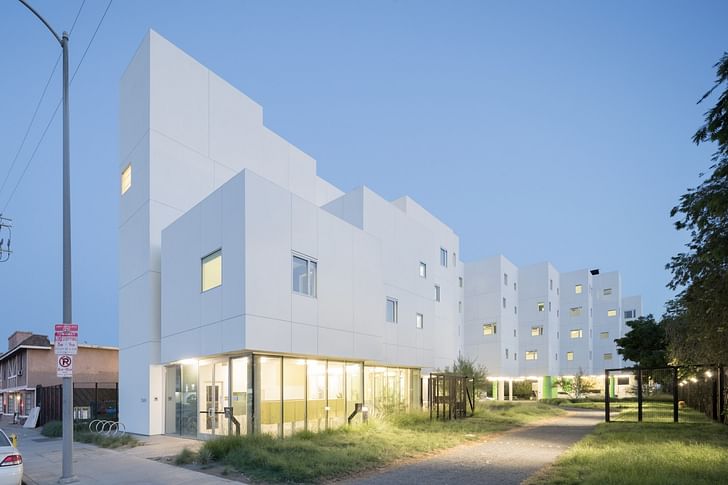
For Skid Row Housing Trust, a nonprofit developer in Los Angeles that builds housing for LA’s homeless population, good design is a basic civil right. Understanding that the environment plays a vital role in their residents’ recovery, the organization consistently teams up with renowned architectural firms such as Michael Maltzan Architecture and Brooks+Scarpa to design buildings for the homeless that stand out.
Los Angeles has the nation’s largest homeless population, and, unfortunately, it continues to balloon. Since 1989, Skid Row Housing Trust has been helping chip away at the epidemic by offering permanent supportive housing to the city’s most vulnerable population. The organization not only houses over 1,800 people every year, it is also bringing good design to the city. And let’s be clear, we aren’t just talking about a nice building here, we are talking about award-winning—one of the organization's newest complexes, The Six, designed by Brooks+Scarpa, has garnered multiple AIA awards. We met up with CEO, Mike Alvidrez, to talk about the organization and the role architecture and smart design play in creating compassionate solutions for LA’s houseless.
Why is good design a priority for your organization? And how do you get people to spend more than just the bare minimum on a housing project?
We believe that good design should not only be relegated to the affluent, but that everyone can benefit, and particularly our residents. It is part of our value system. We’ve learned over time—and it’s not surprising—that people do respond to the environment they find themselves in, whether it’s the natural or the built environment. Understanding that people who have experienced homelessness and, in particular, the population that we tend to serve—folks that have been chronically homeless for five years or more—have not existed in that space, in good environments. We are trying to counteract a lot of the residual from that experience (or set of experiences) by designing permanent supportive housing that is, in some ways, the very opposite of what they’ve experienced in the past. Typically, people that pass through various systems while homeless—the welfare system, the mental health system, the criminal justice system, probation and court and jail etc.—pass through poorly designed, the most utilitarian, non-respectful, non-dignified places one can imagine.Good design shouldn't only be relegated to the affluent, everyone can benefit from it, and particularly our residentsEver been to a welfare office? There is a tangible feeling you can get. Design is little bit like a language and the language communicates certain things about the person experiencing that environment and it can be pretty negative. So not only are you homeless and maybe suffering from a mental illness, but the system projects a certain negativity on top of that: you are not very important. These places can be pretty awful so we try to create an opportunity for people to recover from those ripple effects of homelessness by creating spaces that promote a positive social interaction, a feeling of safety, and a feeling that is premised on dignity. Understanding that homelessness doesn’t define who they are but is simply an experience that they have gone through. We want to create spaces that can make people feel proud and hopefully inspire people to make changes in their own lives that are consistent with the aspirational level of our buildings.

What effect does “good” architecture have on the ways in which SRHT operates?
Homelessness has not been the favorite issue in this city. There are a lot of negative perceptions of homeless people, generally speaking, as a community. And so, the other thing that design does, in terms of changing the way people think about homelessness and homeless people, is focus attention towards problem-solutions rather than seeing it only as a problem. When people see that new, attractive buildings can house formerly homeless people, the conversation becomes easier to change.When people see that new, attractive buildings can house formerly homeless people, the conversation becomes easier to change.This is not why we do it, but it serves as a marketing element to gain greater acceptance.
We also see ourselves as agents of the public. We use public money. We think we have an obligation to use those dollars in a way that says to the public, ‘This is what we did with your dollars.’ We created something that we hope you can recognize as an asset to the built environment for many years to come and not some sort of hastily, poorly designed building that looks like hell in 3-5 years. We are extremely happy that our buildings have gained an element of notoriety because it adds to the conversation about homelessness. We’ve been working on this for over 25 years and awareness has grown to the point where the voters of LA passed measure HHH by a large margin, which creates more opportunity for buildings like this.
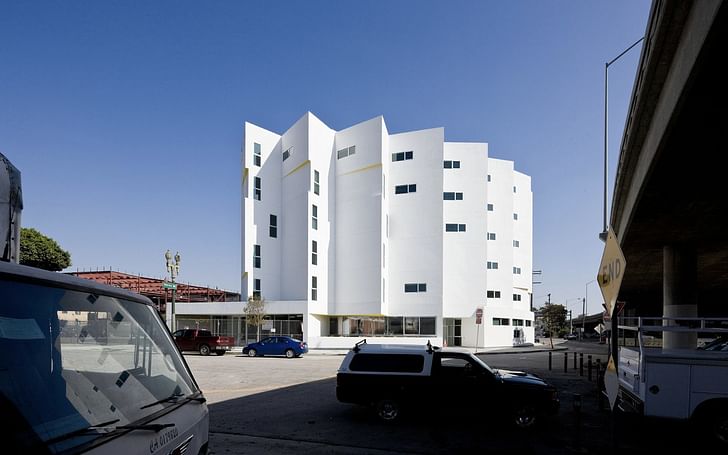
How did your organization transition from dealing with mainly SROs to newly-built projects? What difference did that transition make in your work?
That came about, in part, because, in the early ‘90s, the city passed a 4-5 year moratorium in which owners could not tear down SRO buildings unless they had a replacement unit 1:1. Since many of the folks that owned those buildings did not want to rebuild them, we were able to buy a lot of property. Our focus in the early ‘90s was on preservation and affordability. We would buy the SROs, fix them, and then rent out the rooms to folks that had limited incomes, perhaps a disabling condition, or who had been homeless. At the same time, another non-profit organization, SRO Housing Corporation, was also doing pretty much the same thing and we began to run out of product...As we began to run out of properties to renovate, we switched over to new construction typology and recognized what an opportunity it was. The new construction phase gave us the opportunity to think about how we could connect building design with the services and social needs of the residents.
The new construction phase gave us the opportunity to think about how we could connect building design with the services and social needs of the residents.In the early ‘90s, we had a very strong interest [in attempting] to make our buildings not seem institutional by certain design elements that we would incorporate. They were still SROs without a lot of community space. What we have come to learn has been very conducive to facilitating that transformation. That is why our buildings look the way they do. In all of them there is this underpinning of how do we help that process? How do speed up the progression of social relationships? How does the building itself promote that?
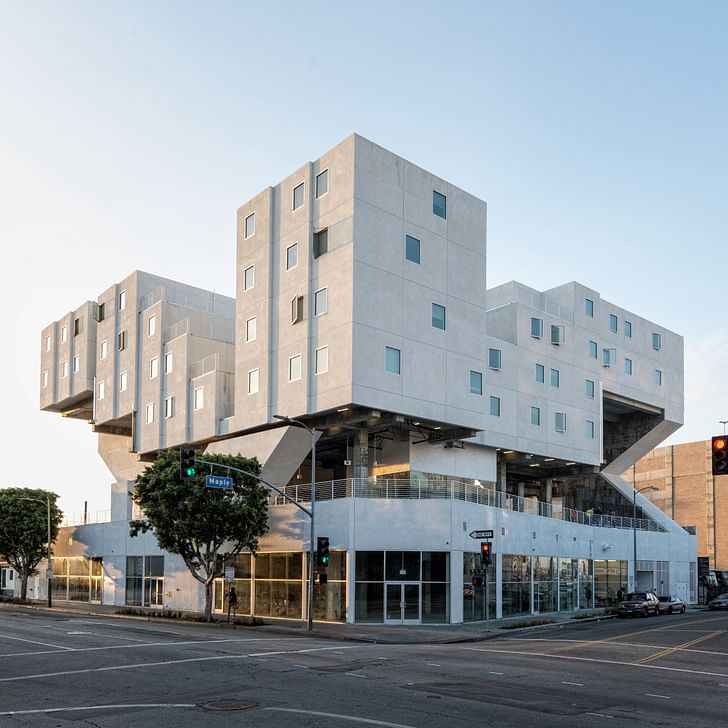
Can you talk a little bit about your partnerships with architects like Michael Maltzan or the firm Brooks + Scarpa?
The community of supportive housing developers is not huge; it is relatively small. Like in any other industry, there’s an awareness of who does what. Our relationships with our collaborators are based on shared values. Firstly, that housing for the homeless should be based on dignity and respect. Generally, all of the architects that we work with share that broadly or specifically. Respect and dignity is something they would see as permeating all of their work—whether it’s a school, or library, or homeless housing. Secondly, we share a sense of responsibility to the city and the community to do our best to enhance the built environment. We share a sense of responsibility to the city and the community to do our best to enhance the built environment.
Of course, we’d like to see that done much more widely than just for our housing. Too often we’ve allowed ourselves to let the bottom line dictate what gets built and how it is designed. The bottom line doesn't always lend itself to design that enhances the public spirit. We all think that is doable if you are willing to think a little bit harder about it. I mean look at this building (The Star Apartments. Image Above)—it’s got a very large community center on the second floor, it’s got a running track, a community garden, two art rooms, a community kitchen, yoga, exercise classes—those compliment the more clinically-oriented services in that building and we all need a balance in our lives between medical attention and the things we do for recreation and enrichment that many of us take for granted. The other element that is important in Housing First is choice—a respect for the individual and their choice. In all of our new buildings we try to create opportunities for people to use the building in the way that they choose, to provide as many opportunities for that choice to be exercised as possible.
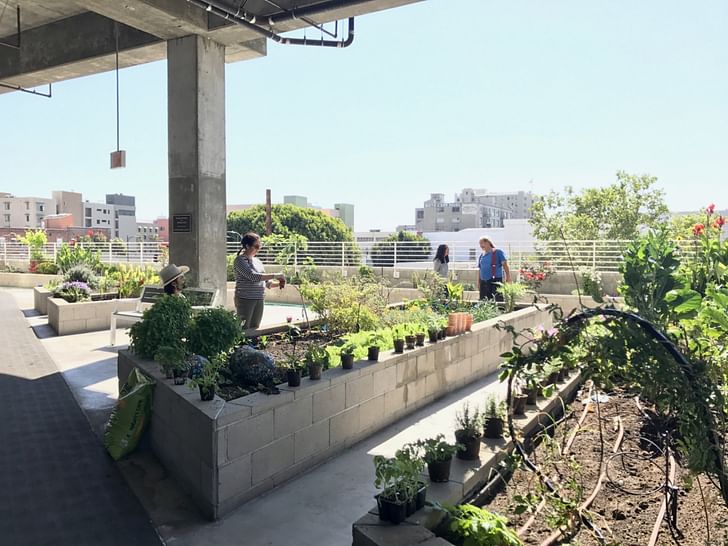
What effect does the current gentrification process of downtown LA have on your work, if any?
Years ago, Downtown was empty and there wasn’t a lot of interest so it was easy to acquire property and much of what we acquired was slum housing and in pretty bad shape. It is a bigger challenge now—the Financial District is on one side, and the Arts District on the other side, and they are both hot from a real estate perspective so it has driven up cost. Gentrification does have an impact but I think it has evolved in some ways. Gentrification would typically affect the poorest people in the community and what we are seeing now, it is not strictly gentrification but the fact that we don’t have enough affordable housing for a lot of people and haven’t for a long time. Homelessness is the most visible aspect of the shortage of affordable housing but it is not the only one. Homelessness is the most visible aspect of the shortage of affordable housing but it is not the only one
Even if you work in Downtown and it’s a household with two earners, you might have to live in Moreno Valley to own a home. There is a huge gap between what people can afford and what is available on the market simply because we have not kept up with population growth that needs that housing. We see this manifested in other areas with people who do live 30-40 miles away from Downtown, who are on the freeway with all the congestion and air pollution and the reduction of quality of life that comes with the long commute. It does have an impact on social lives that is not as easily charted or quantified but those impacts are there nonetheless.
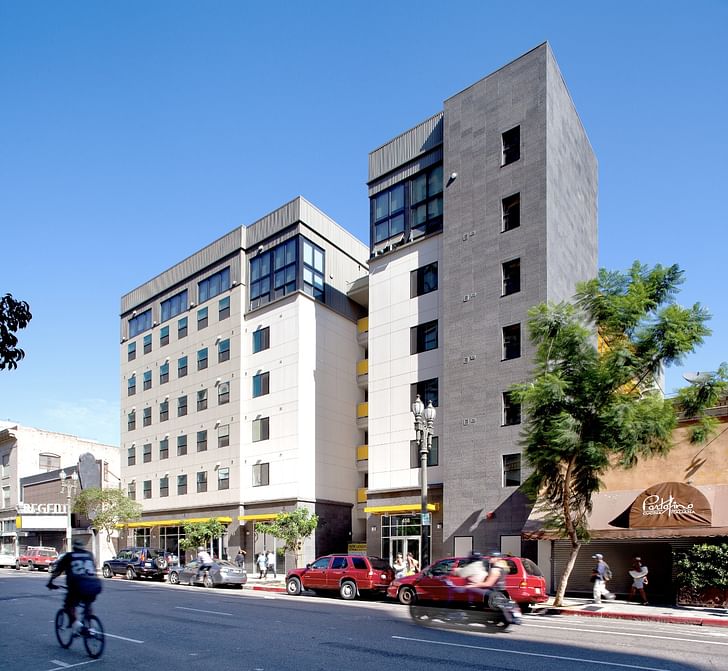
Do you see yourselves potentially taking on affordable housing, more generally, in the future?
New Genesis Apartments, designed by Killefer Flammang Architects, is a good example—it’s a mixed population and income building. All the people who live there earn 60% of the area median income or less. That is around $38-39,000 per year gross but they are not formerly homeless. That was actually a test of a model that we wanted to experiment with. There had been, prior to that building going up, a lot of discussion mostly centered around New York about whether or not homeless and non-homeless people could live together and this whole issue of the ‘poor door’—where rich people enter through one, and poor people through the other. This has one door. I do think we need to think about inclusivity in the way that we design buildings and this (New Genesis Apartments) is actually a good model for transit-oriented development where you can put a certain number of homeless people with non-homeless and make it work. We hope to expand this and there are certain pots of money where you don’t want to make the building 100% homeless and, as we move out of Skid Row, that will become more commonplace. In Skid Row we went 100% because there is an obvious need, but outside of Skid Row we would probably do much more of a mixed population.

How do you think the issue of homelessness should be addressed in the future development of Los Angeles? Do architects have a role to play?
The average person doesn’t walk down the street and say, ‘Oh, look at that building design’ unless it is a striking building Architects have a tremendous role to play in a couple of ways. One that I think has been interesting for us is that we have obviously received a lot of notoriety for our buildings. Must be something to do with those damn AIA awards...The average person doesn’t walk down the street and say, ‘Oh, look at that building design’ unless it is a striking building, something that is just pedestrian and mediocre, it just doesn’t capture our attention. But when people see striking design, they go, ‘Whoa what is that?’ You look at Disney Hall and its like, ‘Holy smokes! What the hell is that?!’ So I think there are places where design has that impact. I’m happy that people— and particularly the architectural community—feel that. Through our work we have elevated the presence of design and we certainly think it is essential to our work. I think architects, in general, appreciate that because I think much of the potential value that architects can deliver through good community design, whatever the building might be, is often overlooked and not appreciated. Architects just really want to go out there and change the world and have their designs be a part of that change. It certainly is applicable to us and our work because the folks that we serve need that kind of transformation in their lives.

We need to think more about the kind of city that we want to live in, in the future, and how good design can play a role in it. It tends to be focused on high-profile projects—the Broad, the Disney Hall—and not so much in a 50-unit apartment building. But that is what this (the Six Apartments) is. It’s a 50-unit apartment building. That’s one of the things that I am so proud that we did with Brooks+Scarpa. It’s basically a box. It’s a box, but, look what they did with it—I mean the opening in the center, the connection to the community, the spaces within the building you can’t see in this photograph that really do give people that choice about how they experience their daily life. I think it speaks to thoughtful design that is based on a certain set of values that are conducive to creating community and creating an aesthetic within that community that people can feel good about. We have a very specific purposed for why we use design the way we do it but we also think it's got a much more universal applicability.
A designer & writer based in Los Angeles anastasiatokmakova.comyouthartsclub.com
3 Comments
perhaps we can use chunks of those blue toilet tablets for the concrete aggregate?
Who knew that the magic solution to the housing crisis would be white stucco?
Seriously??!!!!
There are increasing homeless population in DTLA and These people are still spending millions of tax payer money on building Land Mark on 10 Freeway !!!!
What is wrong with these people, Homeless has to get the waiting list for 3-5 year to able to living in one of this building and it didn't accounted the application process to get on the waiting list which could easily other year, I hope those people are till alive by the time they can live in fancy "Hotel".
They are not helping homeless people and They are not solving the homeless problem. They are using government funding to build pretty building to they can keep the Land Value.
Homeless people are dying on the street every day with serious mental health problem and drug addiction they are desperate for help and this is not helping they are doing the opposite, building those pretty hotel housing are getting more people on the wait list which is put more people come to DTLA on the street.
This is joke what they are doing , they should got more expos to general public not sugar coated them.
Block this user
Are you sure you want to block this user and hide all related comments throughout the site?
Archinect
This is your first comment on Archinect. Your comment will be visible once approved.